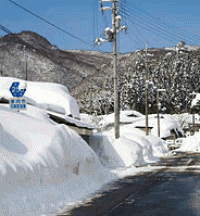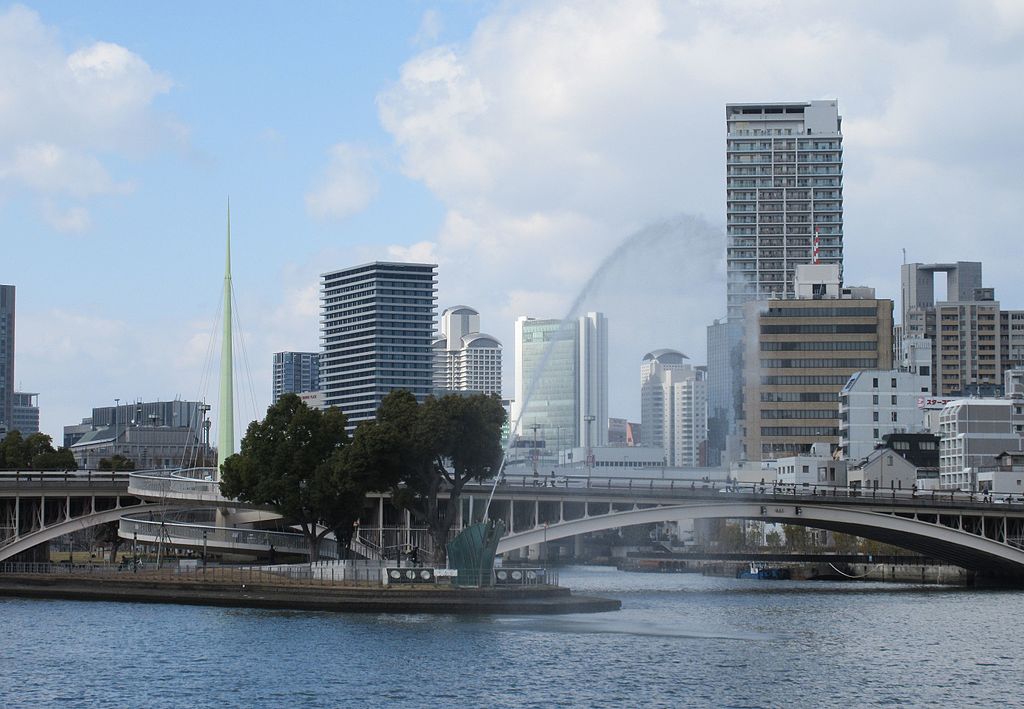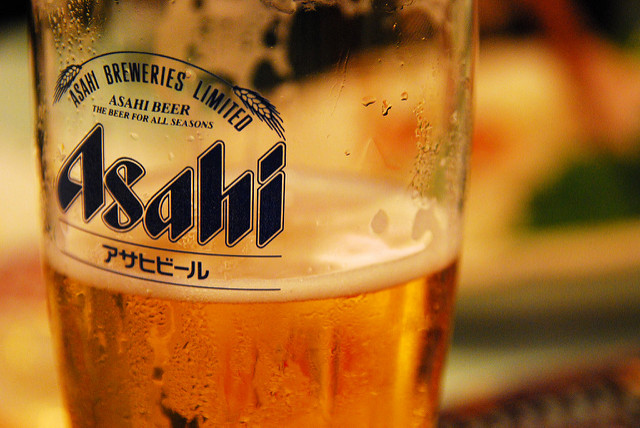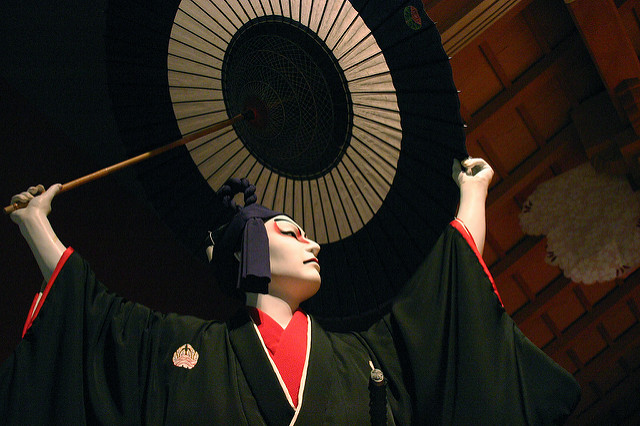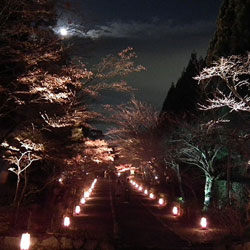Dec 20, 2016
Safe Driving Tips for Winter in Japan
 Driving in Japan presents its own set of challenges, especially for those used to roads and traffic “back home.” The most obvious challenge for many is that the traffic moves on the left side of the road instead of the right, but in addition we must get used to sudden double-parking in Tokyo, very narrow streets, and very tight quarters in car parks throughout Japan.
Driving in Japan presents its own set of challenges, especially for those used to roads and traffic “back home.” The most obvious challenge for many is that the traffic moves on the left side of the road instead of the right, but in addition we must get used to sudden double-parking in Tokyo, very narrow streets, and very tight quarters in car parks throughout Japan.
Winter driving in particular can be tough here. Even those accustomed to driving in wintery conditions will find a challenge or two when the snow starts to fly, or when driving through the mountains mid-winter.
We have complied a list of useful tips to keep in mind if you’re new to winter driving here in Japan.
Snow Removal Kit
This can be as simple as keeping a small windshield ice scraper, brush, and foldable shovel in the trunk. Trying to scrape your windows with a credit card while you are already late is probably one of the worst ways to start a day; not recommended.
Traction – Snow Tires and Chains
This writer is from St. Louis, Missouri, and we get a decent amount of snow every year, but there is one thing that we do that most of Japan doesn’t do enough of; salt and plow the roads. This means if you are used to “all-weather” being sufficient for winter tires in your home country – BEWARE! You may find your car unable to get up even the smallest incline on a cold, snowy day in Japan.
Because of this, snow tires or chains are imperative for winter driving in Japan. In metro Tokyo, Nagoya or Osaka, you may get away with not needing snow tires, but a set of chains to keep in the trunk is still highly recommended. Especially if you’re prone to driving to ski resorts or freak snow storms hit your neck of the woods.
If your vehicle is rear-wheel-drive, adding some weight in the trunk or cargo bed will help, since the rear drive wheels offer better traction when there is weight above them. To note, cars leased through www.LeaseJapan.com will often come with snow tires as a part of the lease package, in addition to providing English language service and even a 24 hour helpline for car related emergencies.
Gasoline
Make sure to drive with no less than 1/3 of a tank of gas when plying the roads in winter. If you become stuck in the snow you’ll appreciate having enough reserve gas to keep the car’s engine and heater going to keep you warm while you wait for help to arrive. Buying gasoline in Japan.
Battery
Always carry battery jumper cables in your car. In cold climates, it’s not unusual for your car’s battery to go dead. If your battery dies you may be able to use jumper cables to jump start it using another vehicle. How to avoid a dead battery? Make sure to run the car’s engine at least a couple of times a week to prevent the battery from going dead in the cold. If you have not used your cars for a few days you should start the engine and leave it running for five minutes before driving. Using jumper cables.
Windows and Wipers
You can’t go anywhere if you can’t see, and your car needs good wipers; if you want to err on the side of caution, grab a new set every fall before the snow hits. Fold the wiper blades away from the glass if you know snow or freezing rain will hit. This prevents the blades from cracking and makes it easy to deice the windshield later, as the blades can freeze to your windshield or become buried under snow. Also make sure to keep a full tank of windshield washer fluid with a winter-mix formulation, because winter windshields can get nasty in a hurry.
Personal Items
Don’t forget your sunglasses. You will need them to keep the glare from snow to a manageable level. Make sure you’ve got gloves handy in case you have to use that scraper. And enough warm clothes or blankets in the car to keep you safe if you break down and need to wait for help. Don’t wear enormous boots if you can help it, as you want your feet to be nimble on the pedals for to adapt to changing road conditions. Your margin for error is a lot slimmer than usual when the roads are slick, so this stuff matters more than you might think.
Survival kit
Keep a space blanket tucked in the glove compartment or some other storage space within reach of the driver. A shiny space blanket’s ability to keep you warm could be a lifesaver, it takes up virtually no space, and it costs less than $10.
- flashlight with extra batteries
- battery powered radio
- water
- snack food including energy bars, raisins, and/or mini candy bars
- matches and small candle(s)
- extra hats, socks, and mittens
- First aid kit with pocket knife
- Necessary medications
- blankets or sleeping bag
- tow chain or rope
- emergency flares and reflectors
- fluorescent distress flag and whistle to attract attention
- Cell phone adapter to plug into lighter
Getting Stuck – Rock Salt, Sand, and Cat Litter
Consider keeping bags of kitty litter, sand, and rock salt in the car in case you find yourself stuck in a patch of slippery ice. Sprinkle the salt, sand, and/or kitty litter in front of the driven tires. The salt will melt the ice which forms when you spin the wheels, while the sand and cat litter will provide additional traction to get you free. If kitty litter, sand, and rock salt is not available, put the floor mats under the drive tires instead.
Getting Stuck – The Rocking Technique
Try to rock your way out. The trick here is to avoid flooring the accelerator and hoping that copious wheel spin will get the job done. In fact, it will just dig you into an even deeper hole by melting the snow as mentioned above. Try the “rocking chair” technique. See if you can get the car to move just an inch in either direction-try going forward first, and if that doesn’t work, switch to reverse. Any movement? Good, then you can start up the rocking chair. Rock as far as you can in that initial direction, and then take your foot off the gas and let the car roll back. When the momentum swings back again, give it a little gas, then let up and so on. If you find it tough going, use the kitty litter around the wheel that is spinning. With any luck, you’ll get a nice rocking chair going, and eventually you’ll rock your way right out of being stuck.
More Information
How to dig your car out after a snow storm:
www.wikihow.com/Dig-out-Your-Car-After-a-Snow-Storm
If you do not have a car, but want one, navigate over to www.LeaseJapan.com and check out our selection of new and used vehicles for sale or lease, as well as car insurance. Need a driver’s license first? www.JapanDriversLicense.com has tools, tips, and guides to help you navigate the system. Happy motoring!
Dec 20, 2016
Aichi Nagoya Yuki Festival
 The Aichi Nagoya Snow Festival is 2000 tons of snow imported from Nagano and Gifu on an annual basis for our enjoyment!
The Aichi Nagoya Snow Festival is 2000 tons of snow imported from Nagano and Gifu on an annual basis for our enjoyment!
This family friendly festival offers an equivalent tonnage of fun things to do besides the 2000 tones of snow used to create a 50 meter snow slide which you can fly down using sleds provided by the venue. You can also find trampolines, bouncy castles, stage performances and shows, and a truly impressive selection of food vendors will be on hand to provide your sustenance and any adult beverages you may require.
More info
The Aichi Nagoya Snow Festival 2016
- All Saturdays, Sundays, and public holidays between Saturday January 28 and Sunday February 19
- 10:00 – 16:00
- Admission is free, but some events/attractions require a fee to participate
- Located at Moricoro Park in Nagakute
Dec 14, 2016
Japan’s Winter Food
As a Brit, I am used to winters being cold, wet and miserable, with skies as grey as the faces shielded from the perpetual sleet and drizzle. As such, it always baffled me when Japanese friends would claim, without a second’s hesitation, that the year’s last was their favorite season.
Unsurprisingly, the reason behind this is the food. Hearty, healthy and warming, winter food in Japan is something that many Japanese look forward to all year round. This is just a quick look at what can be enjoyed in this coldest of seasons.
Nabe
Not being insulated, Japanese homes tend to get cold in winter, so one of the most popular dishes is one that the whole family can crowd around to keep warm. By far and away the most popular is the hot-pot dish ‘nabe’ or ‘nabemono’ (literally ‘things in a pot’). A nabe is actually a large cooking pot, into which a variety of ingredients such as fish, seafood, meats, and vegetables can be simmered in a ‘dashi’ or broth. The dish is cooked on a gas stove around which the family can gather, taking from the bowl and adding more as they go. There are various kinds of nabe such as motsunabe that uses beef or pork with cabbage and chives, kimchinabe that utilizes the Korean spicy fermented cabbage, or yosenabe with meat, seafood, vegetables, tofu, and egg.
Shabu-shabu/Sukiyaki
Like the nabe, shabu-shabu, my favorite winter dish, is prepared on a gas stove in a large pot and has ingredients such as vegetables, seafood and, most commonly, pork strips. Unlike the nabe dishes, with shabu-shabu each item is cooked individually by stirring it through the boiling water or dashi, and it is from this action that the dish gains its onomatopoeic name as you swish it one way (shabu) and then the next (shabu). The cooked ingredients are then dipped into a vinegar ponzu.
Sukiyaki is a near identical dish, though the broth is a sweeter mixture of soy sauce, sugar, and mirin, and ingredients are dipped in raw egg rather than ponzu.
Oden
Another warming dish, oden (in the main picture above) is a huge winter favourite. You may have noticed it in the convenience stores in the big wooden pots near the cashier. If you are anything like me, then you will have noticed the smell before you saw it and been a little revolted (the strong fishy scent is a turn off for me), but ask any Japanese, the conbini oden is not a patch on the real stuff. Often sold by street vendors this dish features a variety of ingredients, such as egg, tofu, konnyaku yam cake, daikon radish, and chikawa fishcake which are stewed for hours in a soy sauce based broth.
Yakiimo
Yakiimo is, as the name suggests, baked potato. However this is no ordinary baked potato, but rather the super sweet, purple on the outside, yellow on the inside, Japanese potato. To an older generation, there is nothing to signal the coming of winter quite like the plaintive call of the yakiimo seller, wheeling his cart, singing his arrival “yakiimo, ishi yakiimo”. Nowadays you are most likely to find yakiimo at festivals or at vendors outside supermarkets but you may still find them sold from the back of vans where they wrapped in newspaper to be devoured: creamy, sweet and a true taste of traditional Japanese winter.

Yakiimo, a Japanese baked potato cooking in foil.
Nikuman
There is a good chance that you have seen the Game of Thrones memes going around. A character stares out into the middle distance surrounded by the caption ‘The conbinis are selling nikuman.’ Yes, nothing quite denotes the coming of winter in Japan like convenience stores returning the nikiman to their glass steam cabinets. Nikuman, the Japanese take on the chinese food ‘baozi’, is a steamed flour dough filled with juicy meat (though there are other flavors such as ‘curryman’ and ‘pizzaman’, the latter of which isn’t as awful as it sounds. With the traditional nikuman, I can recommend using a small pinch of mustard. Well worth the funny looks you’ll get!
Fugu
This last one isn’t exactly a dish that one immediately thinks of in winter, however it is something of a seasonal treat that is best tried at this time of year. Fugu, or blowfish, is famous in the west for being a deadly delicacy, but handled correctly (by chefs that have gone through many years of training), and keeping away from the poisonous liver, it is a delicious dish. In winter there are many places at which you can enjoy a full course, starting with fugu sashimi, deep fried fugu ‘karaage’ and finally, as it is winter after all, fugu nabe. I highly recommend overcoming your fears and searching it out, as it is absolutely delicious. But as I say, ensure that you are dining at a reputable, licensed restaurant. Do not try this at home!
Mark Guthrie
Image by 5th Luna (Own work) [CC BY-SA 2.0], via flickr.com (modified)
Image by calltheambulance (Own work) [CC BY-SA 2.0], via flickr.com (modified)
Image by Jeff (Own work) [CC BY-SA 2.0], via flickr.com (modified)
Image by popopopo (Own work) [CC BY-SA 2.0], via flickr.com (modified)
Image by Lachlan Hardy (Own work) [CC BY-SA 2.0], via flickr.com (modified)
Image by Madalina Seghete (Own work) [CC BY-SA 2.0], via flickr.com (modified)
Dec 14, 2016
Family Winter Sports Guide to Tokyo and Yokohama
Besides skiing and snowboarding, there are a variety of family friendly options to get outside and active this winter. From ice skating to “snow rafting” and even a snow tractor adventure ride for those less interested in getting sweaty; there is no reason to miss out on the great outdoors just because it is cold outside, get the family together and go play outside!
Ice Skating
Toshimaen Ice Skating Rink
- www.toshimaen.co.jp
- 3-25-1 Kouyama, Nerima-ku, Tokyo (google maps)
- Entrance fee: JPY 1000 (Adult) JPY 500 (Child)
- Skating fees: JPY500 Rental Shoes: JPY700
- Term: Dec 15, 2016-Mar 3, 2017
- Hours: 10:00-18:00(Mon-Fri) 10:00-20:00 (Mon-Fri throughout December) 10:00-19:30(Sat, Sun)
Meijijingu Gaien Ice Skating Rink
- www.meijijingugaien.jp (English)
- 11-1 Kasumigaoka-cho, Shinjyuku-ku, Tokyo (google maps)
- Skating fees: JPY 1340 (Adult) JPY 930 (Child ) Rental Shoes: JPY 510
- Term: All year
- Hours: 12:00-18:00 (Mon-Fri) 10:00-18:00 (Sat, Sun)
Citizen Plaza
- www.citizen-plaza.co.jp
- 4-29-27 Takadanobaba, Shinjyuku-ku, Tokyo (google maps)
- Skating fee: JPY 1340 (Adult) JPY 820 (Child) Rental Shoes: JPY 520 (Up to size 32)
- Term: All year
- Hours:12:00-19:45 (Mon-Sat) 12:00-18:30 (Sun, National Holidays)
Mitsui Fudosan Ice Skating Rink (Tokyo Midtown)
- www.tokyo-midtown.com
- 9 Akasaka, Minato-ku, Tokyo (google maps)
- Skating fee (including shoe rental fee): JPY 1500 (Adult) JPY 1000 (Child)
- Term: Jan 8- Mar 8, 2017
- Hours: 11:00-22:00
Shin Yokohama Skate Center
- www.princehotels.co.jp
- 2-11 Shinyokohama, Kouhoku-ku, Yokohama (google maps)
- Skating fee: JPY 1200 (Adult)JPY 700 (Child)Rental Shoes: JPY 600 (Adult) JPY400 (Child)
- Term: All year
- Hours: 12:00-20:00 (Mon-Fri) 10:00-20:00 (Sat-Sun)
Yokohama Bank Ice Arena
- www.yokohama-icearena.jp
- 1-1 Hirodaiootamachi, Kanagawa-ku, Yokohama (google maps)
- Skating fees: JPY1800 (Adult)JPY1300 (Child) including skate rental; JPY1300 (Adult) JPY800 (Child) excluding skate rental
- Term: All year
- Hours: 10:00-18:30
Aqua Rink Chiba
- www.aquarink-chiba.jp
- address : 224-1 Shinminato, Mihama-ku, Chiba City
- Skating fee: JPY1000 (Adult) JPY800 (High school student) JPY700 (Junior High School student & Elementary School Student) JPY400 (Child) Rental Shoes: JPY300
- Term: All year
- Hours: 9:00-20:00 (Mon -Fri),9:00-18:00 (Sat, Sun, National Holidays)
Indoor Skiing and Snowboarding
Sayama Ski & Snowboarding Area
- www.sayama-ski.jp
- 2167 Kamiyamaguchi, Tokorozawa City, Saitama Prefecture
- Ski & Snowboarding fee: JPY4100(Adult)JPY 3300(HS & JHS Student)Free (Child) plus JPY500 annual membership fee.
- Term: Oct 29 to Apr 9
- Hours:10:00-21:00 (Mon-Thu, Sun) 10:00-21:00, 22:00-6:00 (All Night)(Fri, Sat)
Air Boarding/Inner-Tubing
Minakami Kogen Ski Resort (air board)
- www.minakami-ski.jp
- 6152-1 Fujiwara, Minakami-machi, Tone-gun, Gunma Prefecture
- Fees: 1 day JPY12000(Adult)(guide , Insurance Airboard rental and ticket for lift included)
- Fees: Half day JPY 8000 (Adult)(guide , Insurance , “Airboard” rental and tickets for the lift/ included)
- Term: Dec 23, 2016‐April 9, 2017
- Hours: 1 day (10:00–) Half day (10:00–、13:30–)
Kurohime kogen Snow Park (inner-tube)
- www.kurohime-kogen.co.jp www.snow.gurunavi.com/guide/htm/r0051ens.htm (English)
- 3807 Nojiri, Shinano-machi, Kamiminochi-gun, Nagano Prefecture
- Fees: JPY 1000(2 hours rental)*( tickets for the lift necessary)
- Hours: 8:30-16:30
- *700m course
Snow Rafting
Mount Jeans Nasu
- English Site
- www.mtjeans.com
- address: Oshima, Nasu-machi, Nasu-gun, Tochigi Prefecture
- Fee : JPY 1000
- Term: Dec 26, 2016‐Mar 26, 2017
- Hours: 9:00-16:00
- *600M course
Snow Coach Tours
Minakami Kogen Ski Resort
- www.minakami-ski.jp
- 6152-1 Fujiwara, Minakami-machi, Tone-gun, Gunma Prefecture
- Fee JPY1300 (Adult) JPY1000 (Child)
- Term: Dec 23, 2016‐Apr 9, 2017
- 15 minutes ride
Image by Massachusetts Office of Tra (Own work) [CC BY-SA 2.0], via flickr.com (modified)
Dec 07, 2016
Milk, Milk, Milk – Buying Milk in Japan

Of course finding what you like is a matter of buy and try, but there are a few words that will help you on your way if you’re looking for certain qualities in your milk. For starters, the Japanese word for milk is gyuunyuu (牛乳). You might often see something called “Miruku” (ミルク), but this may or may not be real milk. If something is 100% real milk, it will always be labelled 牛乳, and anything else is most likely labelled with 乳製品 (milk product) or 乳飲料 (milk-drink).
Next, you will want to look at fat content. A regular Japanese brand of milk is about 3.6% fat, so you will see this number somewhere on the carton (if only in the details section on the back). A really creamy version might be for example 4.4%, and then a low fat version might be something like 1.8%. Low fat milk is most often labelled like this: 低脂肪牛乳 (teishibou gyuunyuu). You can also find milk fortified with extra calcium (カルシウム) and iron (鉄).
Here are some key words to help you find what you are looking for!
Milk
- milk 牛乳 (gyuunyuu)
- low-fat 低脂肪 (teishibo)
- milk product 乳製品 (nyuu-seihin)
- milk-drink 乳飲料 (nyuu-inryo)
- calcium カルシウム (karushiumu)
- iron 鉄 (tetsu)
Soy Milk
- soy milk 豆乳 (Tōnyū)
Almond Milk
-
Almond Milk アーモンドミルク (Āmondomiruku)
Image by Toby Oxborrow from Kowloon, Hong Kong (TV in the aisles) [CC BY-SA 2.0], via Wikimedia Commons
Nov 28, 2016
Nakanoshima River Cruise in Osaka

Located between the Dojima and Tosabori rivers, the island of Nakanoshima is a gorgeous sight to behold any time of year. This historical epicenter of Osaka’s commercial and administrative culture is especially impressive to see on clear winter nights when holiday lights send a glowing reflection across the water. To get the best view of this glimmering island, it’s best to hop on board one of the impressive Nakanoshima river cruises for a full tour around the lit-up bridges, buildings, and tree-lined streets.
Tours only last around 25 minutes, so you can use one to start or end your evening on a high note! This river cruise is marketed as “the next generation style cruise” due to its inclusion of state of the art wireless headphones that cancel out background noise to give riders a unique entertainment experience. The music changes from traditional Japanese instruments to natural background sounds to better accompany the atmosphere of the Nakanoshima island. While other evening cruises on the river offer tour guides and some music, these personalized headphones on the Nakanoshima River Cruise make for quite a unique viewing and listening experience.
The cruise runs every hour and half hour through December 25 between 5:00 p.m. & 9:00 p.m., and tickets are made available for purchase only on the day of the tour, starting one hour before the first departure time. So head out to the docks one evening this December to reserve your seat on this cruise for a truly unforgettable time on the river!
Nakanoshima River Cruise
Where: Fukushima (Hotarumachi) pier – Dojima River – Fukushima (Hotarumachi) pier 1-1-20, Fukushima, Fukushima-ku, Osaka 553-0003
When: Cruises run until Sunday, December 25 with departures at every hour on the hour and half hour between 5:00 p.m. & 9:00 p.m.
Price: Adults (Junior high school students and older) – 900 yen, Children (Elementary school students and younger) – Free for one child when accompanied by adult. 400 yen is required per child for more than 2 children. Tickets can be purchased at the boat dock up to one hour before the first departure time on the day of the tour. No advance reservations necessary.
Tel: 06-6441-0532
Website (Japanese): http://www.ipponmatsu.co.jp/module_news/detail.php?id=468
Reference Website (English):
https://www.osaka-info.jp/en/events/experience/nakanoshima_river_cruise.html
Extra Information: Persons with the Osaka Amazing Pass can show their pass to get on board for one free ride on the cruise.
By KishujiRapid (Own work) [CC BY-SA 4.0], via Wikimedia Commons
Nov 22, 2016
Brewery Tours in Nagoya
 When it comes to alcoholic beverages, the Japanese are most proud of their sake and rightly so. However, while sake is one of the most recognisable totems of Japanese culture, outside of the country, you’ll be hard pressed to find many people who regularly drink it. Yet, when it comes to Asahi Super Dry and Kirin, it is a different story altogether. Pretty much every sushi or noodle bar worldwide is stocked with the famous brews
When it comes to alcoholic beverages, the Japanese are most proud of their sake and rightly so. However, while sake is one of the most recognisable totems of Japanese culture, outside of the country, you’ll be hard pressed to find many people who regularly drink it. Yet, when it comes to Asahi Super Dry and Kirin, it is a different story altogether. Pretty much every sushi or noodle bar worldwide is stocked with the famous brews
Asahi and Kirin are of course two of Japan’s biggest brewers, which means that vast quantities of beer are made in factories all over the country. you can find them both here in Nagoya and, for absolutely no charge, you can take a trip around.
Kirin Brewery Tour
In operation since 1962, Kirin Beer Nagoya Factory is the oldest beer factory in the Tokai area, but that doesn’t mean that it is a relic, by any stretch of the imagination. Its old factory (which is actually in Kiyosu city, 5km from Nagoya station) has since been renovated so visitors may watch the unique brewing kettles for boiling ingredients.
The 75 minutes tour features a couple of videos with an augmented reality wide screen showing of the brewing process, in particular explaining what is so special about “ichiban shibori” (the first press). You can sample the freshly squeezed wort that is used in making the beer, and if that hasn’t quenched your thirst, the tour concludes with 20 minutes of tasting, with up to three free glasses of beer.
- Access: Train: 5 minutes walk from Owarihoshinomiya Station on the Jyohoku Line; Shuttle bus: Scheduled run bus from JR Tokaido Line Biwajima Station
- Address: 100 Teranohanagasa, Kiyosu City, Aichi 452-8562
- Tel: 052-408-2000
- Website: www.kirin.co.jp/entertainment/factory/nagoya
[googlemaps https://www.google.com/maps/embed?pb=!1m18!1m12!1m3!1d3259.8698669893997!2d136.85022801517113!3d35.209710280306886!2m3!1f0!2f0!3f0!3m2!1i1024!2i768!4f13.1!3m3!1m2!1s0x600375ba4f22960f%3A0x12b4f85e7a9b338f!2z44Kt44Oq44Oz44OT44Ki44OR44O844Kv5ZCN5Y-k5bGL!5e0!3m2!1sen!2sjp!4v1478846854632&w=650&h=200]
Asahi Brewery Tour
Around three hundred people take this tour daily, with coach trips coming from as far as China and Korea to see how the famous beer is made. However visitors wanting to see the factory in motion must visit on weekdays and non-holidays, as the factory closes on Saturdays and Sundays. Should you visit on one of these days, you will instead be shown an interesting film of the factory in full flow.
The tour itself takes approximately 55 minutes to complete, where you learn about the beer making process and history of the Asahi company. You can witness the marvel of modern machinery, and hide your jealousy of the official beer tasters whose job is to sip two bottles of beer every day.and at the end you are shown to the bar. There you have twenty minutes to test three of Asahi’s main draft beers: Asahi Premium, Asahi Black and, of course Asahi Super Dry. Like the Kirin tour there is a three drink limit, however anecdotal evidence shows that this is not always strictly adhered to
- Access: A 15 minute walk from Shin-Moriyama Station. Shuttle busses are at regular intervals. Contact the brewery to confirm times.
- Address: Nagoya City, Moriyama Ku, Nishi-gawara-cho 318
- Tel: 052-792-8966
- Website: www.asahibeer.co.jp/brewery/language/english/
[googlemaps https://www.google.com/maps/embed?pb=!1m14!1m8!1m3!1d13038.742722792736!2d136.9565301!3d35.2142975!3m2!1i1024!2i768!4f13.1!3m3!1m2!1s0x0%3A0xafcfbab85ad7aa6f!2z44Ki44K144OS44OT44O844OrIOWQjeWPpOWxi-W3peWgtA!5e0!3m2!1sen!2sjp!4v1478847237976&w=650&h=200]
Mark Guthrie
Photo: flickr.com “Asahi Beer” by Dave (CC BY-SA 2.0) -Modified
Nov 19, 2016
Getting Dramatic – Kabuki in Tokyo
 When one thinks of Japanese high art, alongside haiku, ukiyo-e, and the movies of Yasujiro Ozu, kabuki is most probably one of the first mediums to come to mind. However, much like the plays of Shakespeare, that some 9,000km away were beginning to gain popularity at around the same time, Kabuki, the classical Japanese dance-theatre known for the stylization of its drama and for the elaborate make-up worn by some of its performers, is an art form that was created to entertain the masses.
When one thinks of Japanese high art, alongside haiku, ukiyo-e, and the movies of Yasujiro Ozu, kabuki is most probably one of the first mediums to come to mind. However, much like the plays of Shakespeare, that some 9,000km away were beginning to gain popularity at around the same time, Kabuki, the classical Japanese dance-theatre known for the stylization of its drama and for the elaborate make-up worn by some of its performers, is an art form that was created to entertain the masses.
In fact, to the die hard fans who continue to enjoy it today, it still is, very much, just that.
The history of kabuki
Kabuki dates back to 1603 when Izumo no Okuni, a Shinto priestess, began performing a new style of dance drama in the dry riverbeds of Kyoto. From there the art form grew into short comic plays depicting daily life. Female actors performed both male and female parts with ribald and suggestive themes that grew to be instantly popular, a popularity that was in part thanks to the ‘red light district’ locations of the theatres and the fact that many of the performers were available for prostitution.
One place in which kabuki did not enjoy popularity was with the ruling Tokugawa Shogunate, who prudishly disapproved of the playlets’ indecent nature and the mixing of the social classes in its theatres, and thus onna-kabuki, women’s kabuki, was banned.
However, in the place of onna-kabuki sprung up wakashū-kabuki with the roles played by young boys, but as the performers were still prostitutes, this too was soon outlawed, and replaced in the mid-1600s with the modern style of yaro-kabuki, with adult male actors playing the roles.

The July 1858 production of Shibaraku at the Ichimura-za theater in Edo. Note the ‘hanamichi’ path running through the audience.
In this time, with the shift of performers’ gender, and feminine-looking male actors called onnagata playing the women’s roles, the emphasis of the performances moved from dance towards drama. Despite the fact that the ‘onnagata’ were too part of the sex industry (with many shows breaking into chaos when audience members fought over the affections of particularly attractive onnagata), kabuki continued to thrive and became formalised during its ‘golden era’ between 1673 and 1841 to resemble the art form we recognise today.
Traditional tropes of kabuki
The kabuki stage is perhaps like nothing you have seen before. Particularly unusual is the ‘hanamichi’ (flower path), a pathway that, as you can see from the above picture, leads from the back of the theatre, through the audience. It is from here that characters often emerge and depart, and it is regularly a place from which a soliloquy will be held. The stage often includes various mechanicalfeatures such as ‘sari’ trapdoors, ‘mawari-butai’ revolving sections, and ‘chūnori’ installations, from where an actor will be assisted in flying out across the audience on wires, often during battle scenes.
Keshō, kabuki makeup, is the most recognisable characteristic of kabuki. On a white foundation, facial lines are exaggerated to produce almost animalistic features. The color of the make up is traditionally denotes the character’s nature with red used to indicate passion, heroism and other positive traits; green, the supernatural; purple, nobility and the colours blue or black pointing out the bad guy.

Make-up artwork is an important aspect of kabuki, with different styles denoting the heroes and villains
The mie pose is another important trope of kabuki, in which the actor holds a strong, dynamic stance to establish his character. At this point his house name is often called out by regular audience members, much in the same way sports fans will sing a star player’s name.
In fact the audience is perhaps more boisterous than you would expect. For a start, many of the audience members will be seen eating ‘bento’ lunch boxes, drinking or eating snacks. Also, much like in the traditional forms of Shakespeare theatre, the audience will often call out to the stage and, in some of the more relaxed forms, the actors will interact with their fans, in some instances helping themselves to audience members’ food from the hanamichi.
Where to see kabuki in Tokyo
Kabuki continues to be popular in Japan, and while it can be expensive (some tickets are upwards of 20,000 JPY, a far cry from its humble beginnings as an entertainment for the masses) there are three main theaters at which we can catch a show in Tokyo.
Kabuki-za
Kabuki-za in Ginza is the main kabuki theatre in Tokyo. Opened in 1889 by Meiji era journalist, Fukuchi Gen’ichirō, it has been run by the Shochiku Corporation since 1914. Performances are staged most days, and tickets are sold for individual acts as well as for each play in its entirety.
- Where: 4-12-15 Ginza, Chuo-ku (map)
- Tel: 03-3545-6800
- Website: www.kabuki-za.co.jp (English)
Shinbashi Enbujo
Located between Tsukiji Market and Ginza, Shinbashi Enbujo is something of a younger sister to the more famous Kabuki-za. Originally built in 1925 to house performances of local ‘geisha’, today it sees performances of a variety of acts, including, of course, kabuki.
- Where: 6-18-2 Ginza, Chuo-ku (map)
- Tel: 03-3541-2600
- Website: www.shinbashi-enbujo.co.jp (Japanese) www.kabuki-bito.jp (English)
Kokuritsu Gekijo
Kokuritsu Gekijo is Japan’s national theatre, and as well as kabuki shows various traditional Japanese theatrical performances within its three halls. Kabuki is mainly shown in its largest halls, with the likes of Noh and bunyu on its smaller stages.
- Where: 4-1 Hayabusa-cho, Chiyoda-ku (map)
- Tel: 03-3265-7411
- Website: www.ntj.jac.go.jp (English)
Meiji-za
Meiji-za in Hisamatsu-chô dates back to 1873, and has undergone a variety of misfortunes ever since – burning down in the Great Kanto Earthquake of 1923, bombed out during WW2, rebuilt in 1950, and again burned down again seven years later. In spite of these mishaps, it continues to put on shows periodically throughout the year.
- Where: 2-31-1 Nihonbashi-Hamacho (map)
- Tel: 03-3660-3939
- Website: www.en.meijiza.co.jp (English)
For details of where and when shows are being performed, check out the Tokyo Kabuki Guide at www.tokyokabukiguide.com
Mark Guthrie
Photo: wikipedia.com “Oniji Ōtani III (Nakazō Nakamura II) as Edobee in the May 1794 production of Koi Nyōbo Somewake Tazuna” (Public Domain) -Modified
Photo: wikipedia.com “The July 1858 production of Shibaraku at the Ichimura-za theater in Edo.” by Utagawa Toyokuni III. (Public Domain) -Modified
Photo: flickr.com “Kabuki Warrior” by Greg Gladman (CC BY-SA 2.0) -Modified
Nov 17, 2016
Vaping in Tokyo
 While vaping, the alternative to smoking which its advocates claim to have none of the adverse affects of tobacco, is taking much of the world by storm, it seems that Japan is quite slow to catch up with the phenomenon.
While vaping, the alternative to smoking which its advocates claim to have none of the adverse affects of tobacco, is taking much of the world by storm, it seems that Japan is quite slow to catch up with the phenomenon.
While IQOS smoking devices – a hybrid between regular cigarettes and electronic cigarettes that uses real tobacco refills, but instead of burning that produces smoke and tar, heats it to produce tobacco-flavored vapor – are readily available on the market, many people are concerned by the use of tobacco and prefer to continue with their e-cigarettes and vaporisers. However, finding these products, still quite heavily regulated in this country, can be hard.
Below are a few vendors in Tokyo at which you can shop. Be aware that stores in Japan will be unlikely to sell E-Juice with nicotine.
Vaping Ape Tokyo
In partnership with LA Vaping Ape, this Shibuya store sells all kinds of apparel including starter sets, mechanical MODS and VV MODS. They stock a variety of e-liquids including ‘Murica brand baked apple pie flavour.
- Address: 1 150 0041, 1 Chome-3-3 Jinnan, Shibuya, Tokyo
- Phone: 03-6416-3050
- Website: www.vapingapetokyo.com
Samurai Vapors
At Samurai Vapors you can pick up all sorts of hardware including MODS, tanks, atomisers, and highly rated starter kits from Joytech and ELEAF. There are many Japanese brands of e-liquid, and you can also pick up some of the artisan-boutique liquids from Five Pawns.
- Address: Tokyo, Taito, Ueno, 10 – 8, 7 Chome
- Phone: 03-5830-3634
- Website: www.samurai-vapors.com
Vape House
Vape House has a chain of stores in Harajuku, Shibuya and Kinshicho. As well as providers of the equipment they aim to be hangouts where vaping enthusiasts can gather in their stylish ‘bar’. The Harajuku store has some English speaking staff.
- Address: 3 Chome-20-21 Jingūmae, Shibuya-ku
- Phone: 03-3643-7146
- Website: www.vape-house.jp
Pure Vapor Japan
This Sanno based vaping store has a huge selection of products and brands to choose from. The store itself is quite small, but its edgy, arty vibe is very much aimed towards the younger vaper. Check out their Facebook page for their latest offers on some really edgy accessories.
- Address: Tokyo, 大田区山王Sanno, 2 Chome−5−8, 柱 ビル 2 階
- Phone: 03-3775-8296
- Website: www.purevaporjapan.com
For a further list of vaping stores in the city, you could check out this reddit post compiled by an employee of Vape House.
Online providers
As well as brick and mortar establishments, you can find plenty of online stores. Some of the below are powered by Rakuten, while others are small independent stores.
- Vape JP (English language website. Products contain nicotine)
- Vaporcone
- Nexsmoke
- Taeco
- Japan Vape
- JP Vapor
- American Vape
- JP Store E-Cig
- Tsuhan
- Nicotaba
- Sumotoku Tokyo
- Tokyovaping
- Pipe-m
- Tabaco-ya
Mark Guthrie
Photo: flickr.com “Vaping” by 智麒 林 (CC BY-SA 2.0) -Modified
Nov 14, 2016
Kyoto Hanatouro Illumination Festivals

Hanatouro is an “illumination festival” that happens in Kyoto twice a year at two separate locations. Actually there are two separate festivals that take place, the Kyoto Arashiyama Hanatouro and the Kyoto Higashiyama Hanatouro that feature different parts of the city. They are similar, but each offers a slightly different experience.
Kyoto Arashiyama Hanatouro
This festival takes place annually in December, and despite the cold many people flock to see some of Kyoto’s most famous areas lit up in “illumination style,” and to walk through streets lined with handicraft lanterns in a wide variety of shapes and sizes. The overall effect is quite stunning! You can also enjoy later than usual hours at most local businesses, where foods sales are brisk!
- “Light and Blossoms Pathway”
- Flower Arrangement Promenade
- Entire Togetsukyo Bridge Area Illuminated
- All Bamboo Forest
- Walkways Illuminated
You can find more information on the festival website
Kyoto Higashiyama Hanatouro
The Kyoto Higashiyama Hanatouro takes place annually in March. The festival features the “Light and Blossoms Pathway,” with approximately 2500 lanterns decorating the 5 km walking path that leads into the foothills of Higashiyama Mountain through Shoren-in Temple and Maruyama Park, and then through Yasaka Shrine to Kiyomizu-dera Temple.
On your walk you will be treated not only to the lights, but to sponsored displays and activities:
- Ikebana Promenade
- University Town of Kyoto / Traditional Light Exhibit
- Fire Watch and Ohayashi Music Group
- Takeakari-Yugennokawa (Bamboo lanterns/Profound Stream)
- Dedication dance of an apprentice geisha
You can find more information on the festival website
Photo:Creative Commons “Arashiyama Hanatōro, Nison-in” By 松岡明芳 (CC BY-SA 3.0) -Modified
